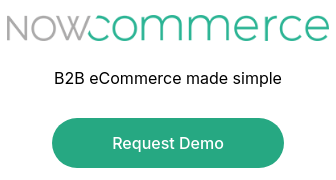Business-to-business commerce is the first idea that jumps into people's minds when they think of how a wholesaler or distributor operates. Some examples are looking for local companies to get supplies, looking at warehouses to hold your inventory, finding a retailer to provide a market, or sourcing shipping companies to send your products. B2B eCommerce is the transfer of normal operations from traditional routes to ones conducted online. It's when businesses find suppliers and make purchases online without using the traditional means of placing orders with a sales rep over the phone or by email with a customer service rep in the home office.
 Growth Trends
Growth Trends
Businesses entering a B2B eCommerce solution began with the impression that it works similarly to B2C. B2C and B2B have very striking differences that are not related. What businesses were looking to build on was the simple methods by which customers have access to information and can effortlessly make purchases or request quotes.
As more businesses enter into a B2B eCommerce strategy, this growth will stimulate developing better methods for conducting business with customers. It will streamline the operation using automated software that processes orders, notifies shipping and receiving, and keeps everything greased for continuous performance.
Global Reach
B2B eCommerce empowers businesses to transcend local boundaries and embrace global opportunities. Online markets enable firms to connect with manufacturers and distributors worldwide, allowing them to source products directly from factories or offer their services to companies in any region. This expansion encourages businesses to view their operations with a broader perspective beyond local confines.
Positioning to sell globally provides businesses with unmatched advantages over competitors. They can discover suppliers offering more competitive quotes for bulk materials and stock and identify customers with unmet demands in emerging markets. B2B eCommerce makes businesses aware of these opportunities and provides the means to seize them effectively.
Streamlining with Software
At the core of B2B eCommerce is software. It is used to run the servers, keep the networks safe, and to provide businesses with easy solutions for maintaining vital operational processes. There are customer relationship management (CRM) platforms, enterprise resource planning (ERP) platforms, and order management systems (OMS). Each of these help businesses establish and build stronger customer relationships with other businesses and maintain resources efficiently.
Recently, these systems have evolved to embrace mobile technology. With the widespread use of smartphones and tablets, software is now designed to harness these devices, maximizing productivity for business teams and employees. This innovation ensures they have access to crucial information precisely when needed, enabling them to seize opportunities effectively. CRM platforms excel in this area, allowing sales teams to track customer interest seamlessly. When a customer expresses interest, the CRM promptly notifies a team member via email, text, or app, empowering them to respond swiftly and efficiently.
ERP enhances business capabilities by offering a sophisticated e-commerce tool that provides insight into resource consumption across various processes. Companies leverage ERP to efficiently manage cash flow, labor, raw materials, and inventory, equipping them with the foresight to allocate resources effectively. When faced with high service demand, businesses can swiftly adapt by reallocating labor, balancing workforce distribution during peak times, or scheduling tasks strategically. ERP empowers businesses with real-time, global access to resource data on desktops, laptops, or mobile devices, ensuring informed decision-making and seamless operations.
When selling through a B2B customer portal, businesses should have an OMS so customers can place orders quickly and easily, anytime they need to. With a system that allows customers access to all pertinent account information, like pricing, real-time inventory, and tracking information, they get the B2C experience that they’ve grown to expect, and the business capitalizes on less order processing needed on their end.
B2B eCommerce is experiencing significant growth, offering businesses expansive opportunities to attract new customers. Through eCommerce, companies can connect with other businesses worldwide, sourcing products or offering services. However, the current landscape of B2B eCommerce requires enhancements to streamline interactions. Innovative software solutions address this by automating processes, providing timely updates, and alerting businesses when customer actions are needed, ensuring a seamless and efficient experience.

